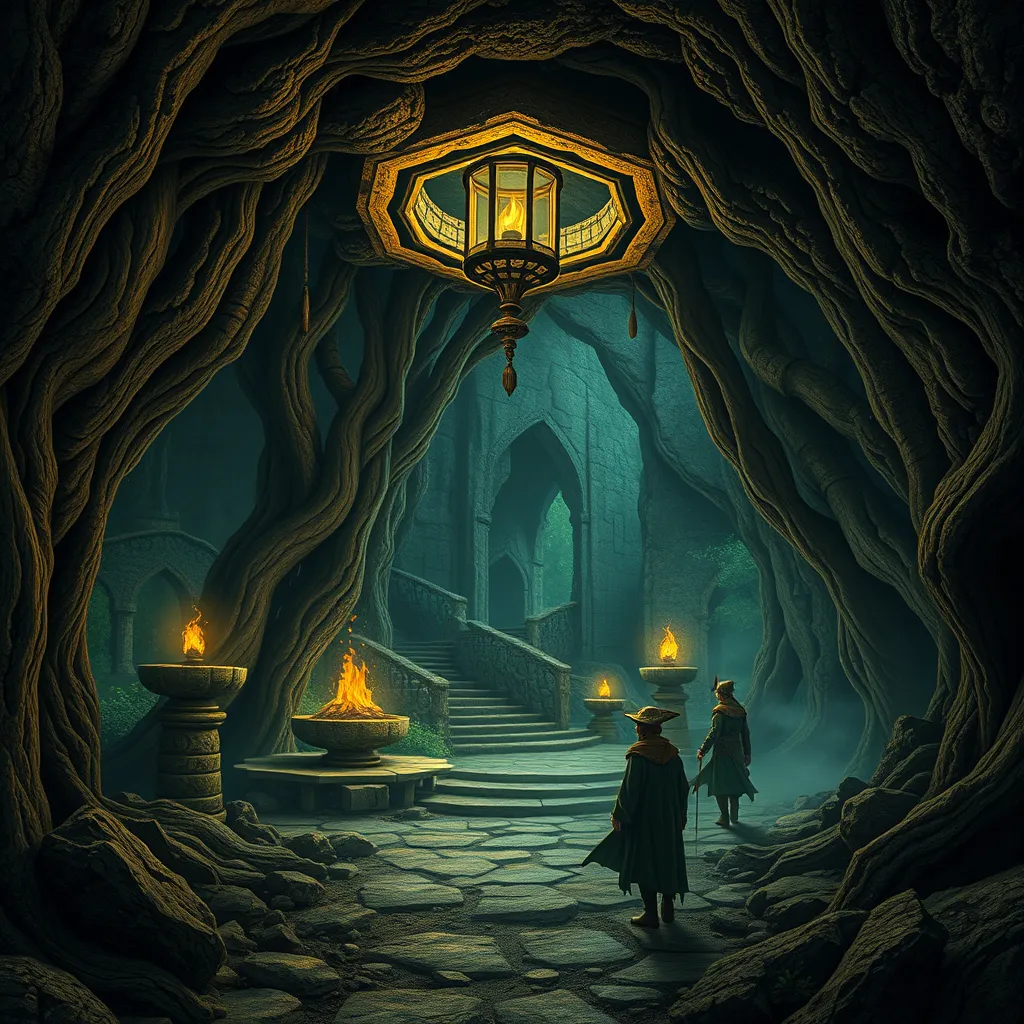The Elven Underworld: The Lore of the Underground Homes and Secrets of the Fae
I. Introduction to the Elven Underworld
The Elven Underworld, a mystical realm hidden beneath the earth, holds immense significance in Fae mythology. It is not merely a physical space but a symbol of the deeper connections that elves share with the natural world and the magic that permeates it. This underground realm is often depicted as a place of beauty and enchantment, infused with secrets and wisdom that surpass the understanding of mortals.
Throughout history, elves have been portrayed as guardians of nature, and their connection to the underground realm symbolizes their role as protectors of ancient secrets and magical knowledge. This article aims to explore the various facets of the Elven Underworld, delving into its historical origins, architectural wonders, inhabitants, and the mysteries that lie within.
II. Historical Origins of Elven Lore
Elven lore has deep roots in ancient texts and folklore, with references to underground realms appearing in various cultures around the world. From the Norse myths of Svartálfar to the Celtic tales of the Tuatha Dé Danann, the connection between elves and subterranean dwellings is a recurring theme.
These myths were shaped by cultural influences, with different societies interpreting the Elven Underworld in unique ways. Over time, the lore has evolved, adapting to changing beliefs and societal norms. The fascination with elves and their hidden homes continues to thrive in modern interpretations, drawing from these rich historical foundations.
III. Architectural Wonders: The Structure of Underworld Homes
Elven architecture is renowned for its elegance and harmony with nature. Traditional elven homes in the underground are often described as intricate and organic, seamlessly blending with the natural landscape. These structures typically feature:
- Curved lines and organic shapes that mimic the forms of nature
- Natural materials such as stone, wood, and crystal
- Large open spaces adorned with bioluminescent plants and flowing water
The materials used in construction reflect the elves’ deep connection to nature. Stones are often imbued with magical properties, while woods are chosen for their strength and beauty. The layout of underground dwellings is designed to promote a sense of community and connection, with communal spaces for gatherings and rituals.
Symbolically, the design of these homes represents the elves’ relationship with the earth, their reverence for life, and their commitment to preserving the balance of nature. Each home is unique, reflecting the personality and status of its inhabitants.
IV. The Inhabitants of the Elven Underworld
Within the Elven Underworld, various types of elves inhabit these enchanting spaces, each with distinct roles and responsibilities. Some of the key inhabitants include:
- Seers: Possessing foresight, they guide their communities with wisdom.
- Artisans: Skilled in crafting magical artifacts and beautiful creations.
- Guardians: Protectors of the underground realm, ensuring safety from external threats.
In addition to elves, the underground is home to numerous mythical creatures, such as:
- Fairies
- Dwarves
- Gnomes
The social structure of the Elven Underworld is hierarchical, yet it emphasizes collaboration and mutual respect. Elders often hold positions of power, guiding the community while valuing the contributions of all members.
V. Secrets and Mysteries of the Fae
The Elven Underworld is steeped in secrets, with magical artifacts and ancient spells hidden away from the outside world. These artifacts hold great significance, often tied to the elves’ history and power. Some notable examples include:
- The Crystal of Eldoria: A powerful gem said to enhance magical abilities.
- The Elven Codex: A collection of ancient spells and knowledge.
- The Veilstone: An artifact that protects the Elven Underworld from intruders.
Hidden knowledge is a crucial aspect of elven culture, with ancient spells passed down through generations. Maintaining these secrets is vital for preserving the balance between realms, as the elves safeguard their world against external influences.
VI. The Elven Underworld in Literature and Popular Culture
The depiction of the Elven Underworld has evolved in literature and popular culture. Classic texts, such as J.R.R. Tolkien’s works, portray elves as ethereal beings connected to nature, while modern fantasy often reimagines these themes in diverse ways.
Popular films and games have also featured the Elven Underworld, showcasing its allure and mystery. Notable examples include:
- The Lord of the Rings: The portrayal of Elven realms in Middle-earth.
- Pan’s Labyrinth: A dark yet enchanting interpretation of Fae lore.
- The Legend of Zelda: The incorporation of elven-like characters and realms.
These adaptations analyze themes such as the conflict between nature and industry, the importance of community, and the quest for knowledge, reflecting contemporary societal concerns.
VII. Modern Interpretations and Cultural Impact
In contemporary society, elven lore continues to enchant audiences, influencing fantasy storytelling and cultural narratives. The resurgence of interest in folklore and mythology has led to a renewed appreciation for these ancient tales, blending them with modern sensibilities.
Authors and creators draw inspiration from the Elven Underworld, crafting narratives that resonate with themes of environmentalism, identity, and the mystical connection to nature. This cultural impact is evident in:
- Fantasy novels that explore elven societies and their struggles.
- Art and music that celebrate the beauty of the Fae.
- Community events centered around folklore and mythological storytelling.
VIII. Conclusion
The Elven Underworld is a realm rich with significance, embodying the deep connections between elves, nature, and the mysteries of magic. As we explore the historical origins, architectural wonders, and the secrets of the Fae, we uncover a world that continues to inspire and intrigue.
In conclusion, the enduring legacy of Fae lore invites us to delve deeper into myths and legends, encouraging exploration and appreciation for the narratives that shape our understanding of the world and its wonders.
